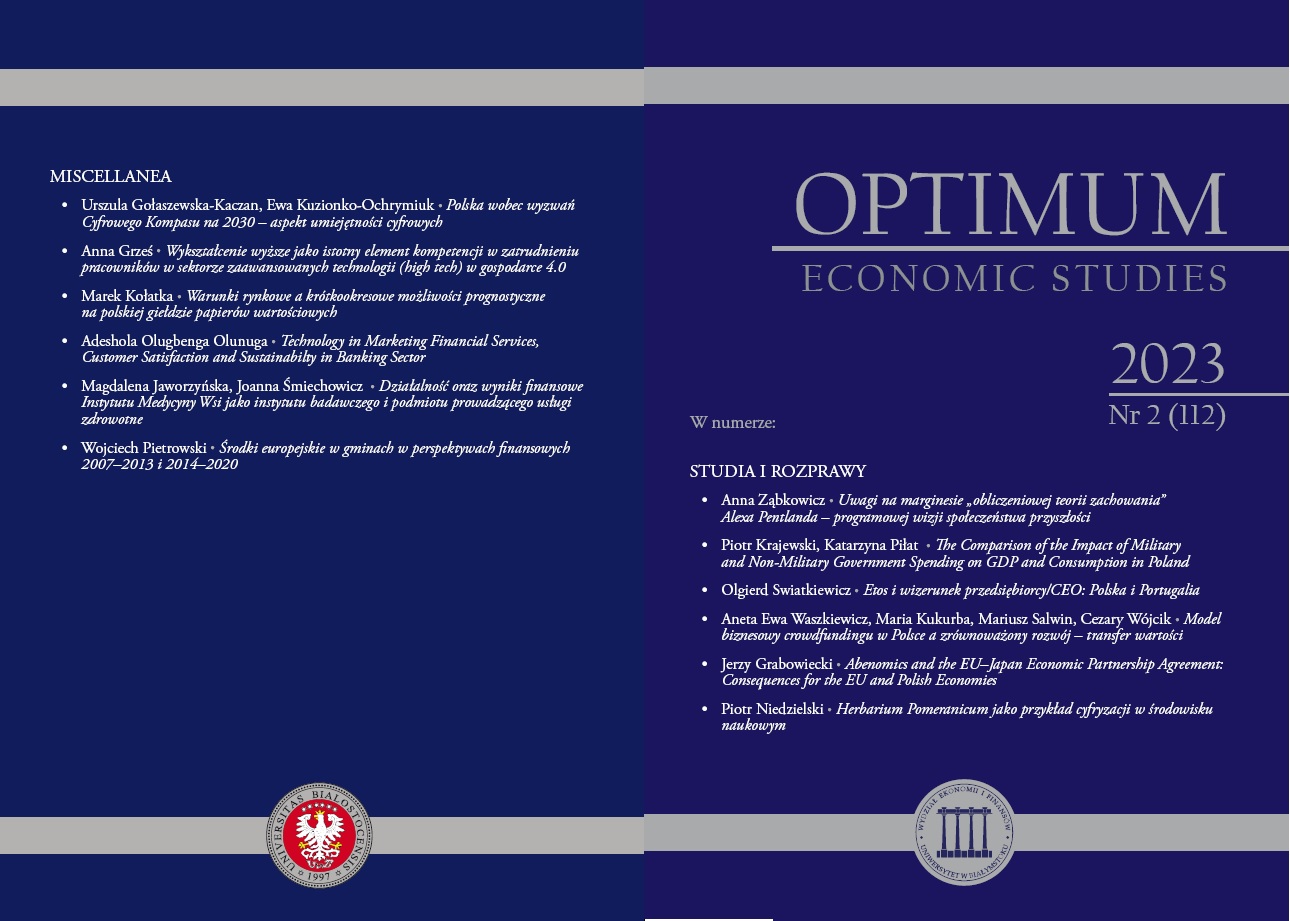THE COMPARISON OF THE IMPACT OF MILITARY
AND NON-MILITARY GOVERNMENT SPENDING
ON GDP AND CONSUMPTION IN POLAND1
THE COMPARISON OF THE IMPACT OF MILITARY
AND NON-MILITARY GOVERNMENT SPENDING
ON GDP AND CONSUMPTION IN POLAND1
Author(s): Piotr Krajewski, Katarzyna PiłatSubject(s): National Economy, Economic policy, Security and defense, Military policy, Peace and Conflict Studies
Published by: Wydawnictwo Uniwersytetu w Białymstoku
Keywords: military spending; non-military spending; fiscal policy;
Summary/Abstract: Purpose – The purpose of the article is to compare the macroeconomic effects ofmilitary and non-military government spending on the Polish economy, which is particularlyrelevant in the context of the rapid rise in military spending after the outbreak ofthe war in Ukraine.Research method – The research is based on a new-Keynesian dynamic stochasticgeneral equilibrium model estimated for the Polish economy. The model developed for thestudy takes into account differences between 3 types of government spending – militaryspending, non-military current spending and non-military investment.Results – On the one hand, the empirical results show that in the short and mediumterm, increasing military spending is a more effective method of stimulating GDPthan rising non-military spending. On the other hand, the impulse response functionsindicate that increasing non-military spending is a better tool for enhancing effectiveconsumption.Originality / value / implications / recommendations – This is the first research exploringthe macroeconomic effects of military spending in a CEE country, which is based on sto-chastic general equilibrium model accounting for heterogeneity of government spending.Assessing these effects at a time of unprecedented growth in military spending in Poland is an important added value of the study. The main implication of the research is to recommendincreasing military spending to boost GDP, while rising non-military spending tostimulate effective consumption.
Journal: Optimum. Economic Studies
- Issue Year: 112/2023
- Issue No: 2
- Page Range: 19-37
- Page Count: 19
- Language: English

